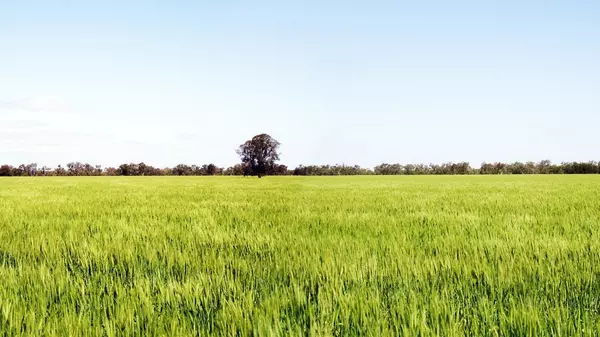Buying Raw Land? Here’s What You Need To Know Before You Break Ground
The dream of owning land is as deeply embedded in the American psyche as apple pie and baseball. Since the 1800s, when the Homestead Act made it possible to stake a claim to 160 acres of raw frontier, it’s become a symbol of freedom and opportunity, and a chance to build your dream home from the ground up.
But experts say buying natural, undeveloped land is nothing like buying a home.
Unlike a standard home purchase, land deals come with hidden complexities—zoning restrictions, utility costs, financing hurdles, and environmental red tape. One overlooked step can turn a “great deal” into an expensive mistake.
Before you buy, it’s critical to understand what can actually be done with the land, and how to protect yourself during due diligence.
Do your homework: Why land requires a different kind of due diligence
There’s no such thing as a turnkey piece of nature. These parcels offer untamed land in its natural state, often without roads, utilities, or any other improvements. That means that they require a great deal of research before purchasing.
“There's a lot of brainwork that goes into purchasing land,” says Miltiadis Kastanis, executive director of sales at Compass. “It’s really important to bake in true due diligence.”
That process goes far beyond a standard inspection window. Kastanis recommends giving yourself 30 to 60 days (or more) to conduct feasibility studies and confirm that your plans are even possible.
He also emphasizes the importance of digging into zoning, permitting, and by-right use long before closing day.
“The No. 1 pitfall when buying land, especially an uneducated go at it, is later finding out that the land can’t be used for what you want to use it for," Kastanis says. “Or it doesn’t have the zoning rights that you thought to build higher, or potentially that the land has some sort of restriction or designation that you were unaware of."
Real estate expert Fred Loguidice, founder of Sell My House Fast Tampa, advises taking an even more cautious approach: “Buyers have to work on the basis that the land is totally unbuildable unless due diligence establishes otherwise.”
That means reviewing local ordinances for setbacks, height limits, and subdivision potential, and assembling a team early—typically a land-use attorney, engineer, and architect—to interpret what’s actually allowed.
Failing to do so can turn a dream parcel into a dead end. Kastanis recalls one “great deal” in Miami Beach that unraveled when buyers learned too late that the home couldn’t be demolished due to its protected status.
The big 5: What to check before you buy
Even if the land you’re buying looks untamed, it doesn’t mean it’s beyond the jurisdiction of local laws. While due diligence can be time-consuming, it can be what separates a promising parcel from a costly mistake.
Brigid Brookman, a real estate attorney with over 15 years of experience in the commercial real estate sector, recommends planning on these steps from the start.
“A strong purchase contract should provide sufficient time to secure all necessary permits, approvals, and entitlements—which can take anywhere from six months to a year depending on the jurisdiction,” she explains. “It should also give the developer the ability to walk away if approvals aren’t obtained, preserving flexibility and protecting capital.”
Here are the steps you should bank on:
1. Zoning and permitted use
Don’t take a property’s listed zoning at face value. Verify exactly what can and can’t be built there. Some parcels labeled “residential” might allow only a single-family home or prohibit short-term rentals. Others may have minimum lot-size requirements that block future subdivision. Review local codes carefully or have a land-use attorney interpret them for you.
2. Access
Your land isn’t worth much if you can’t legally reach it. Confirm that there’s recorded, legal access—either through a public road or a properly documented easement.
“A dirt road won't cut it,” says Loguidice. “You must observe a public road access or recorded easement on the deed and verified by your title company. Without legal access, the land is useless.”
3. Utilities
Plan for the costs of bringing basic services to your site. Loguidice advises budgeting at least $20,000 for well drilling, septic installation, and electrical connection. A septic percolation test is nonnegotiable: If the soil can’t absorb wastewater properly, your build may be denied altogether.
4. Surveys and boundaries
Never rely on the seller’s old survey or tax maps. Commission a fresh boundary survey to confirm property lines, identify encroachments, and ensure the legal description matches the physical lot. It’s one of the few ways to prevent disputes or surprises down the line.
5. Environmental assessment
This is one of the most important steps, according to Brookman.
"A Phase I environmental assessment, and if needed, a Phase II, along with geotechnical testing, can help uncover conditions that could negatively impact the project," she says.
These tests screen for issues like contamination, soil instability, or other subsurface items that could make building unsafe or prohibitively expensive.

Financing challenges: Why banks don’t love dirt
Lenders can be surprisingly cautious when underwriting loans for raw land. Because vacant property produces no income and offers little collateral, banks consider it a high-risk investment. As a result, traditional 30-year mortgages often don’t apply.
Instead, buyers should expect to make a larger down payment (often between 25% and 50%) and secure shorter loan terms, typically five to 15 years. Even then, approval can take longer than expected, and rates tend to be higher than for home loans.
Still, there are ways to make the numbers work.
- Local community banks often understand regional markets better than large national lenders and may be more flexible with land loans.
- Seller financing can streamline the process entirely, bypassing bank appraisals and giving both parties more room to negotiate terms.
- If you already own property, a home equity line of credit (HELOC) or portfolio loan lets you borrow against existing assets, often with lower rates and fewer hurdles.
Remember to always negotiate a generous due diligence period to finalize your financing while confirming that the land can be used as intended. Rushing this step could leave you holding property you can’t afford—or can’t build on.
Lessons from the field: A tale of two land deals
Sometimes, the difference between a profitable investment and a financial nightmare comes down to one detail caught or missed during due diligence.
For Kastanis, due diligence paid off. He purchased a small home on a lot zoned for two stories, with plans to redevelop. Shortly after closing, the neighborhood was up-zoned, allowing higher density and effectively doubling the property’s value.
“It’s the kind of outcome that proves why research and patience matter,” he says.
Not every buyer is so lucky. Loguidice recalls a client who skipped a $1,500 septic test on a 5-acre property in the country, assuming the soil would be fine. After closing, the county required a specialized Level 3 engineered mound system—a complex setup that cost $65,000 and delayed construction by half a year.
“Never skip a percolation test,” Loguidice warns. “If the tests indicate that you need a more advanced system, you have contractual leverage to walk away from the purchase agreement or negotiate the price to fit in the unforeseen $50,000 expense.”
How to spot land with long-term value
What separates a good deal from a gold mine is foresight.
“There’s no crystal ball,” says Kastanis. “However, in real estate, there tends to be this floating thesis that continues to work—that if you buy land or a house in a geographically popular or established neighborhood, there’s some sort of downward protection.”
In other words, what’s rare and buildable today will likely be more valuable tomorrow.
Look for areas where development is expanding but available land is limited. Local planning departments often publish a Future Land Use Map (FLUM), which shows where new roads, sewer lines, or zoning changes are planned. Buying before that infrastructure arrives is how many investors get ahead of the curve.
“Buy in the right neighborhood, whether that be an established one or one that shows signs of future growth,” says Kastanis. In other words, pick a market with staying power—one where population growth, job access, or amenities signal long-term demand.
Raw land is not a quick trade. If you can hold for three to 10 years, your odds of appreciation rise significantly. But if you’ll need to sell in the short term, you may be better off putting your money elsewhere. Market cycles, zoning shifts, and infrastructure projects all take time to play out.
Buying raw land can be one of real estate’s most rewarding moves—or one of its most expensive mistakes. The difference lies in time, due diligence, and expert help.
As Kastanis puts it, “It’s a lot of research and selecting the right property. It’s a little bit of luck, and it’s timing, timing, timing.”
Categories
Recent Posts










GET MORE INFORMATION

